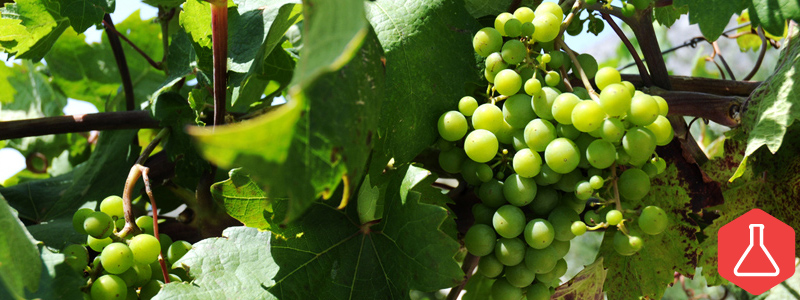
Ever smelled green bell pepper, cracked black pepper or jalapeño in a wine such as Sauvignon Blanc or Cabernet Sauvignon and wondered how those aromas got there? These aromas are just mother nature’s way of saying what-up and adding to a resulting wine’s complexity. Let me explain:
In the early summer, when the grapes are beginning to form, their colors do not reflect the romantic language often used by high-end wine writers to describe them. The grapes are not, as a writer such as James Suckling would say, the voluptuous golden yellow of white wine that captures the sunlight in their photogenic orbs or the lush brooding grayish red of red wine grapes that traps the morning sun behind their tannic skins that are weeping with morning dew. No, they are boring solid green balls. But, inside those green balls are all the makings of delicious romance.
Within these solid green balls is a significant amount of acidity and a good dose of a compound called methoxypyrazine. I realize methoxypyrazine is a mouthful, so let’s just call it pyrazine. Pyrazine is a plant’s defense mechanism. What pyrazine does is it renders a growing grape unpalatable to animals (human included). This is the way the vine ensures its seeds are not transported away when they are still immature and unable to grow another plant. Pyrazine is astringent and sharp and straight up bitter and nasty; however, if you were to pick a green ball from a Sauvignon Blanc vine and bite into one of these baby grapes, while you might first cringe and spit it out with a few expletives, if you kept it in your mouth, your taste buds would settle and you’d realize that the resulting flavor lingering on your palate is bell peppery or similar to a jalapeño.
Don't Miss A Drop
Get the latest in beer, wine, and cocktail culture sent straight to your inbox.Come back to that same Sauvignon Blanc vine after verasion (the moment of ripening when a grape goes from green to translucent yellow for white wine grapes or grayish red for red wine grapes), and pluck a now deliciously ripe grape into your mouth. Swimming in those fun tastes of sweetness with hints of crispiness that make you crave a cold bottle of mouth-watering Sauvignon Blanc would be that ripe bitter note you had spit out before! That slight bell peppery dose is that defense mechanism pyrazine still hanging out at the party. It’s this note that will eventually add to the complexity of our refreshing Sauvignon Blanc, giving our mouth and brain wafting notes of green bell pepper with slight hints of grapefruit interwoven with mouth-watering acidity that pairs well with seafood and sunsets.
So, next time you are drinking a wine and you smell and taste these aromas among the other flavor profiles, know that it is just nature’s way of defending itself and, as a result, adding to the wine’s complexity.
